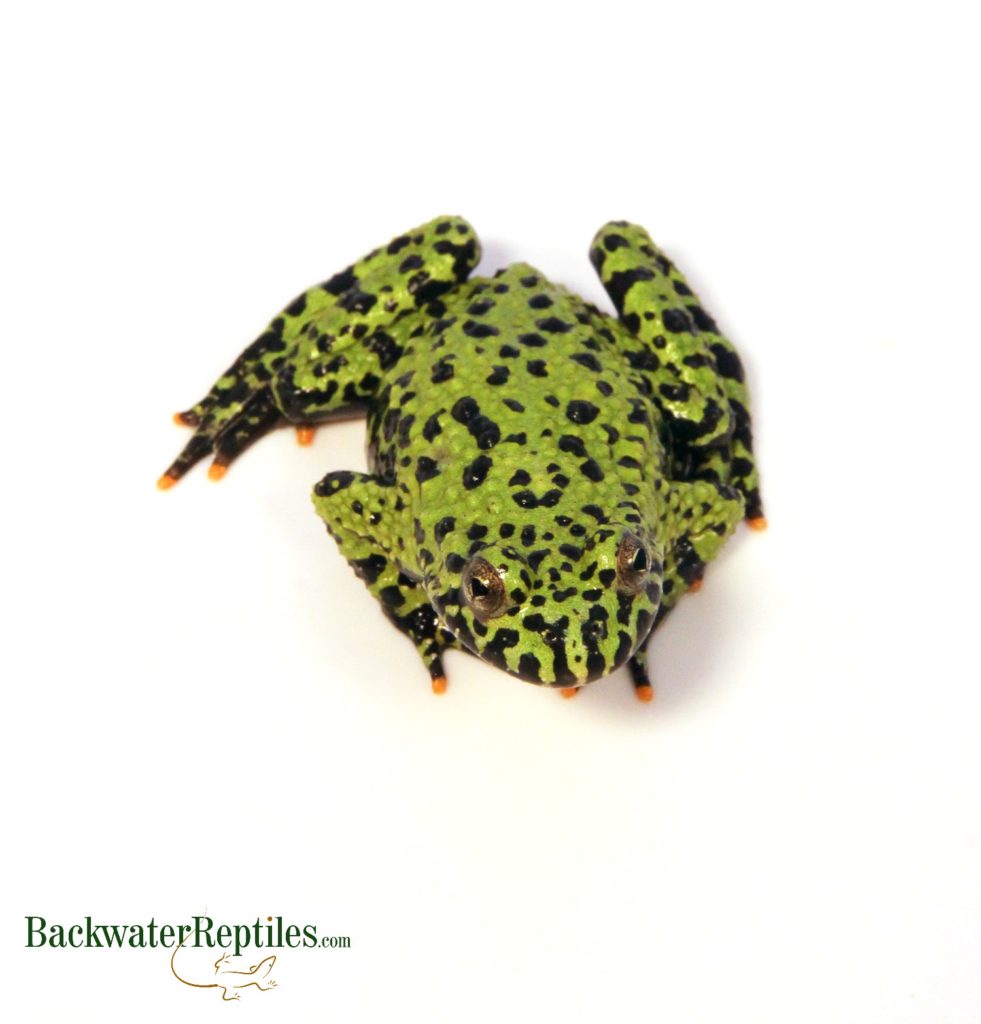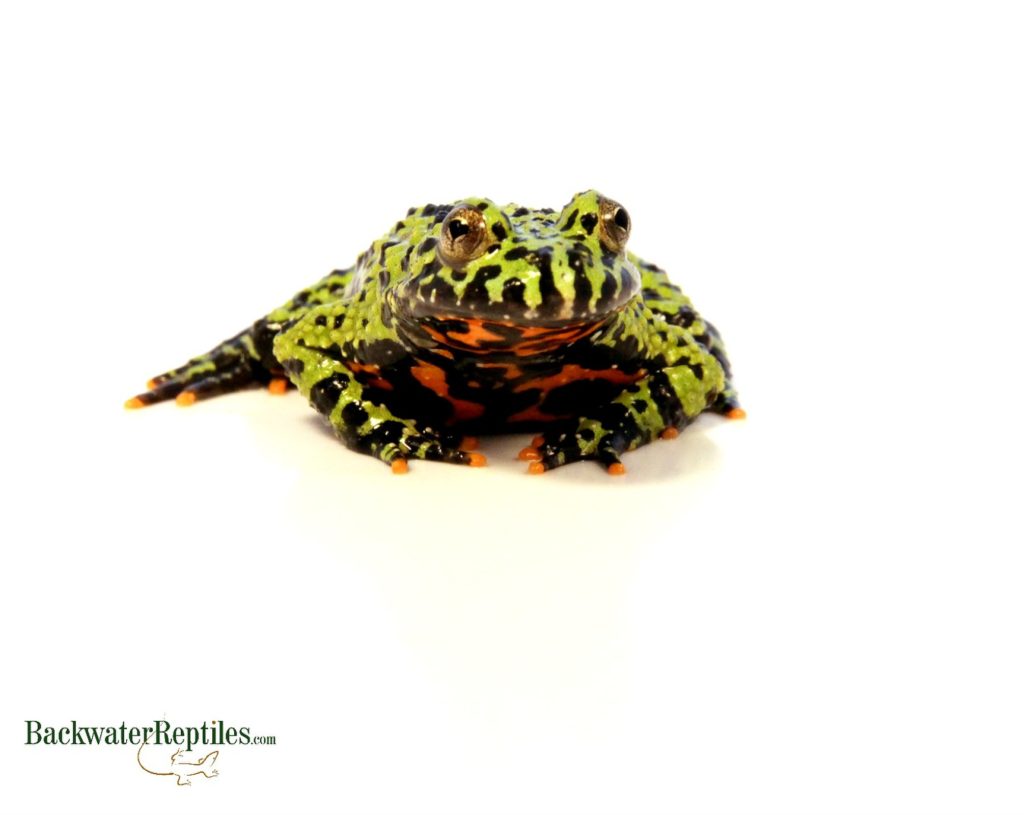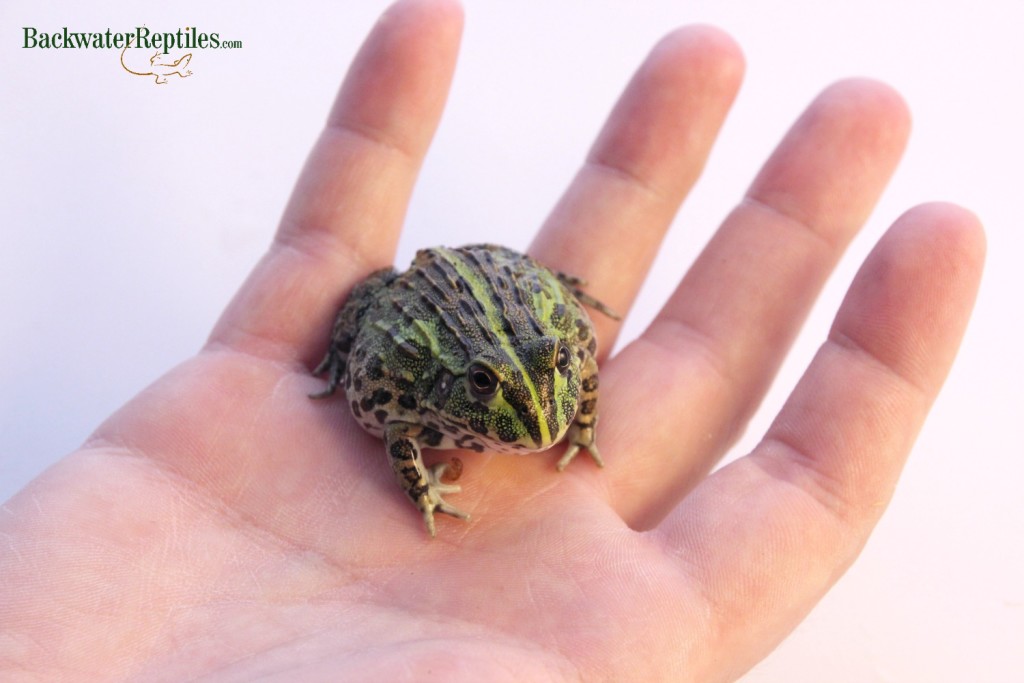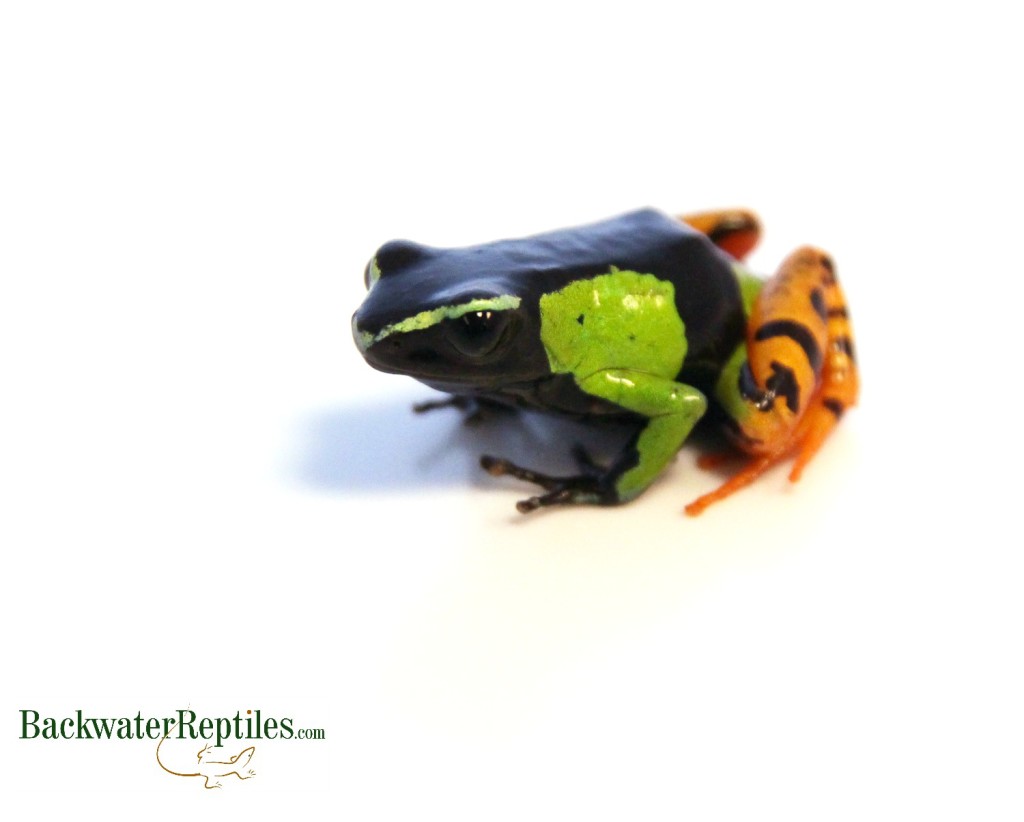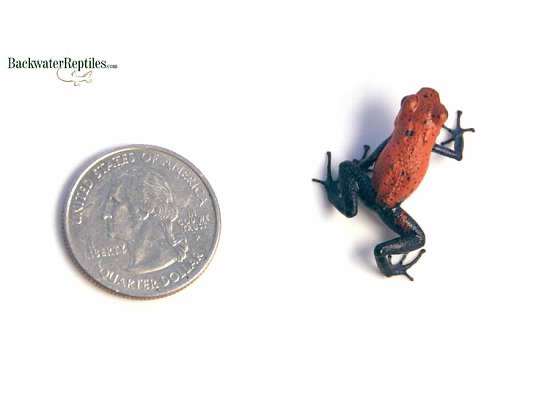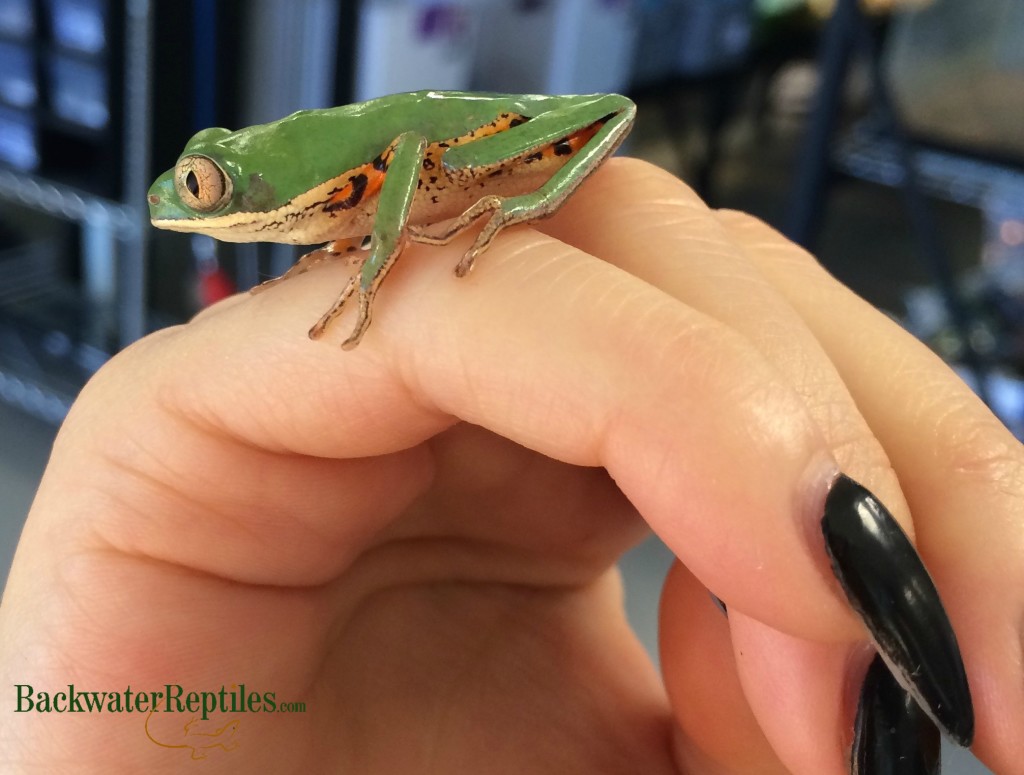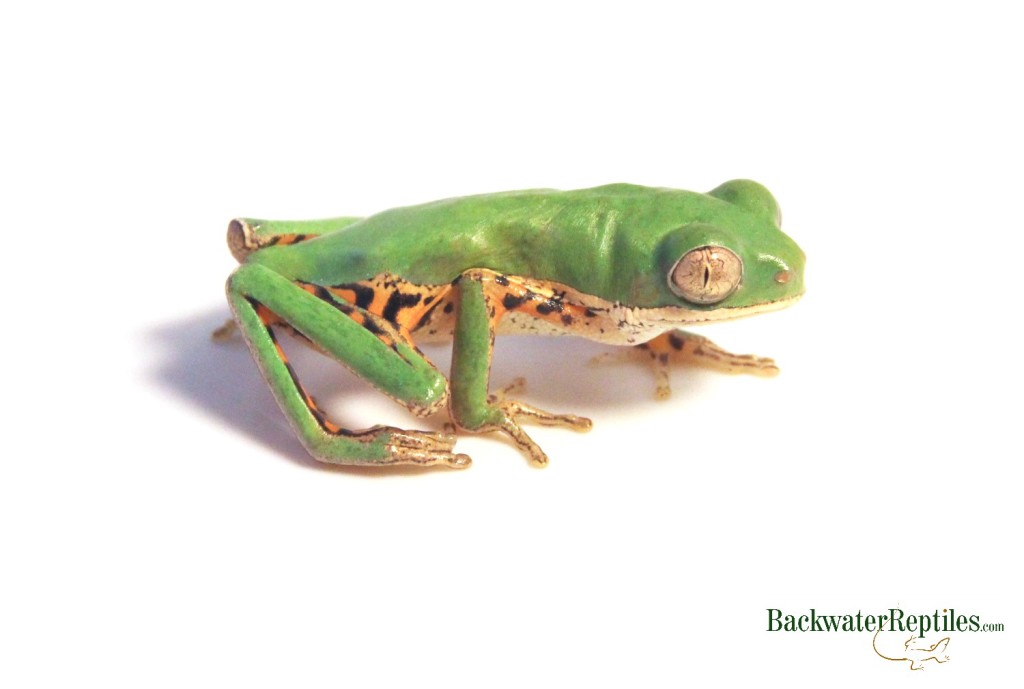At Backwater Reptiles, we love reptiles and amphibians of all shapes and sizes, regardless of whether or not most people would label them as cute. In fact, some of our favorites are the oddballs!
In this article, we’re going to list our favorite odd-looking pet frogs. Although these frogs are not for everyone, each of them is certainly unique.
The Oddest Pet Frogs
Budgett’s Frog (Lepidobatrachus laevis)
This jelly-like frog is also known as the hippo frog and the Freddy Krueger frog. We’re not quite sure where the hippo moniker arises from, but this frog is nicknamed after the infamous horror villain because its long fingers are reminiscent of his knife hands. This frog also packs quite an attitude and is known to be aggressive and mean. It opens its wide mouth as big as possible and emits what is best described as a scream in an effort to scare off threats.
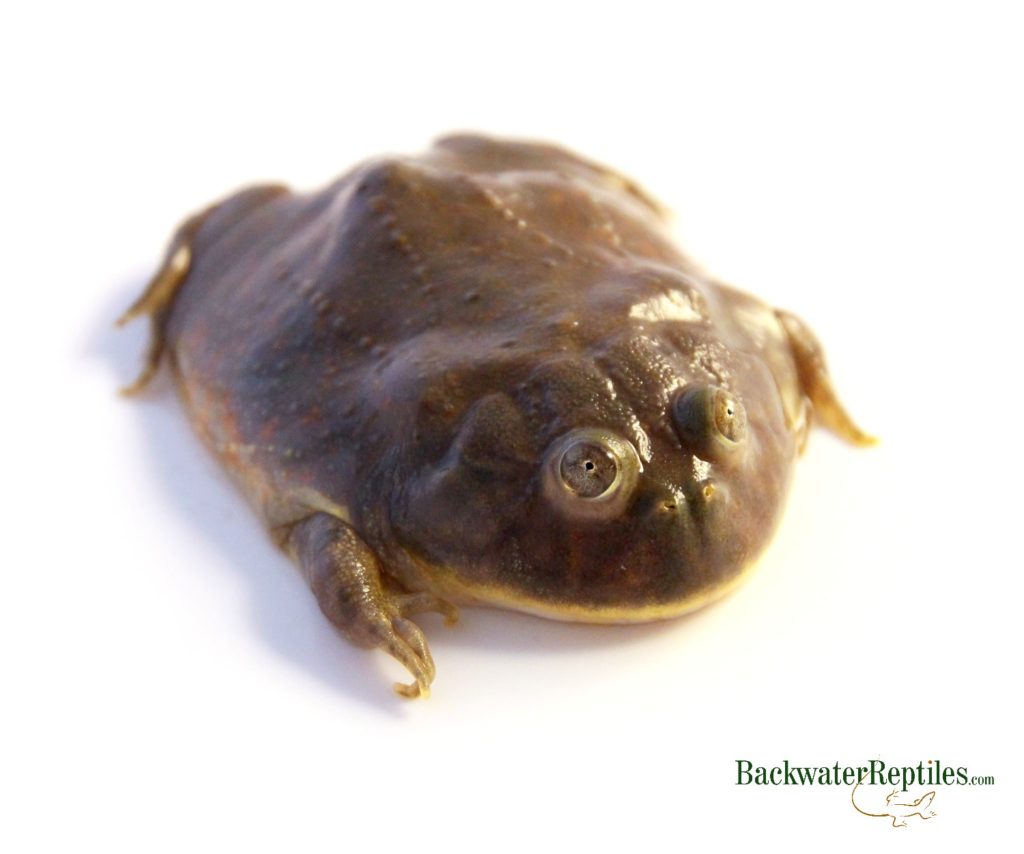
In addition to this interesting defense mechanism, Budgett’s frogs are memorable because they are just so strange-looking. Besides having bodies built like blobs, they have tiny protuberant eyes on top of their heads. And because they rarely leave the water, they can appear somewhat soggy to boot.
But we want to stress that even though Budgett’s frogs are unusual, both in appearance and in behavior, they still make rewarding and fascinating pets.
If you are interested in caring for a Budgett’s frog of your own, Backwater Reptiles does sell them. And we even wrote an entire blog article dedicated to their care.
Mozambique Rain Frog (Breviceps mossambicus)
We’re huge fans of the Mozambique rain frog because it is such a comical amphibian. Not only is this an adorably silly-looking frog, it also has some charming behaviors that many people find extremely endearing, albeit weird.
Rain frogs are known as “grumpy frogs” and have several variations of memes circulating around the internet to comment on their squashed, flat, surly little faces. Besides their squashed faces, rain frogs possess somewhat balloon-ish bodies with pigeon-toed feet. They’re almost reminiscent of froggy bulldogs.
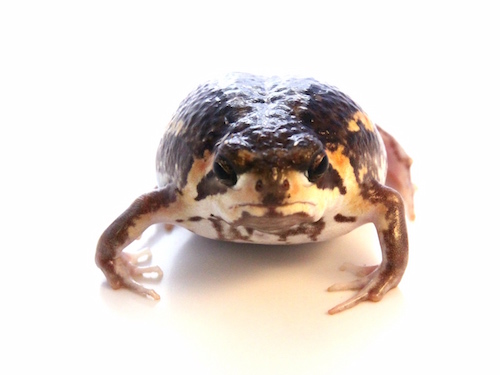
Oh, and did we mention that rain frogs squeak rather than croak like a typical frog? Some people say that the rain frog’s call sounds like a kitten’s cry or a tiny squeal. No matter what you think it sounds like, most people agree that the noise is simply adorable.
Because rain frogs are relatively new to the reptile and amphibian pet world, we actually wrote an entire article dedicated to their care.
And if you’re wondering where you can get a pet Mozambique rain frog of your own, Backwater Reptiles can definitely help you out.
Surinam Giant Toad (Pipa pipa)
Everything about the Suriname toad is odd. This toad (which is actually a frog) looks weird, it behaves weird, and it even reproduces weird! We think that they make awesome pets simply because you’ll have so many curious factoids about them to tell to your friends and family.
The first thing you’ll notice when you see a Suriname toad is that it is a flat frog. And we do mean that quite literally. It has a triangular, flat head and its body is also very pancake-like.This is an adaptation to allow the frog to appear like leaf litter or wooden detritus on the bottom of the bodies of water where it resides. It also helps the frog to be stream-lined.
Even if you never get your pet Surinam toad to reproduce, you should be aware that these frogs produce their babies in a very unconventional manner. After an elaborate mating ritual, the eggs stick to the female’s back and sink into a honeycomb shaped “nest” in her skin. The eggs will stay there on her back in the protective honeycomb until fully formed froglets emerge! Suriname toads don’t go through a tadpole phase.
If you want a pet Suriname toad to call your own, be sure to check out our blog article detailing how to care for them.
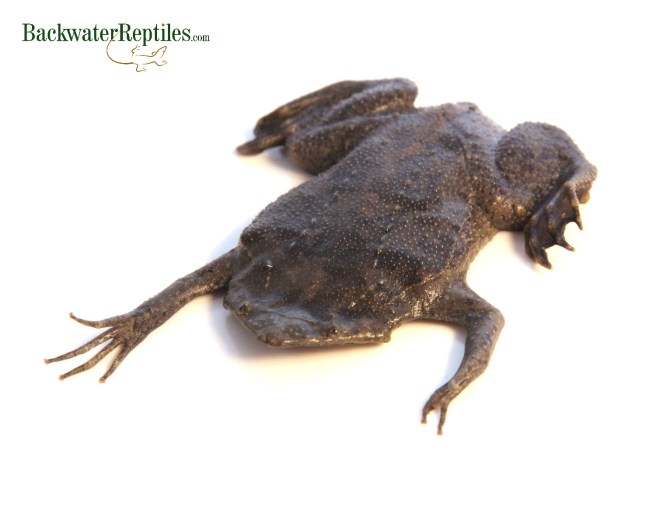
Conclusion
We hope that this article shows you that just because a frog is kind of bizarre-looking, that doesn’t make it a bad pet. In our opinion, being odd just makes these frogs that much more lovable. We hope that you agree, and that you’ve enjoyed perusing our list of the oddest pet frogs in the world!

